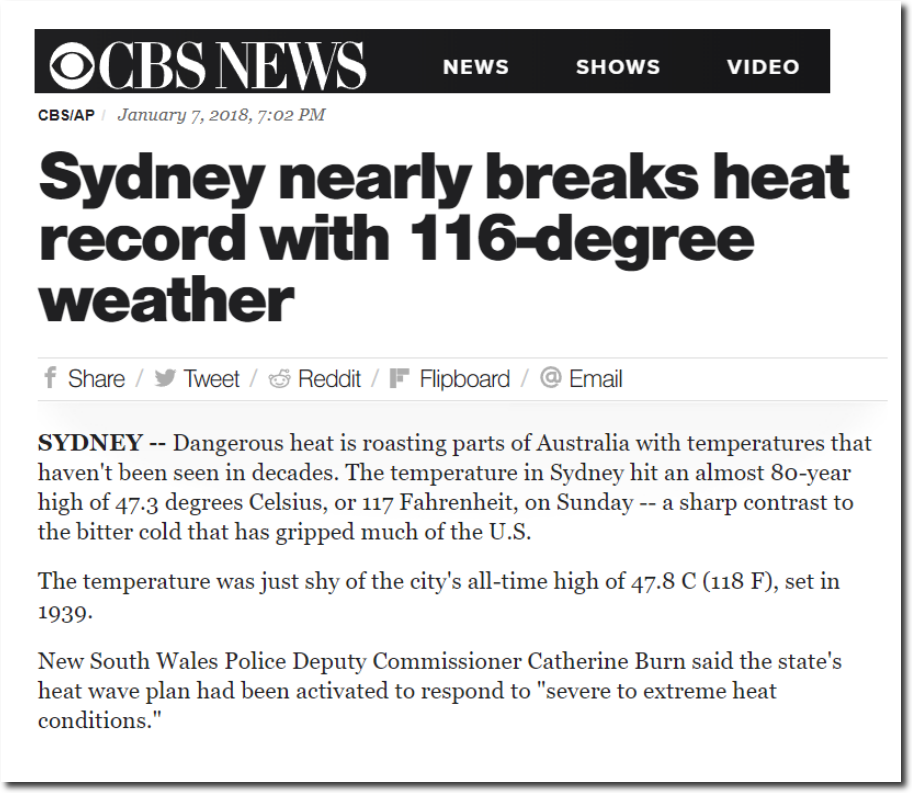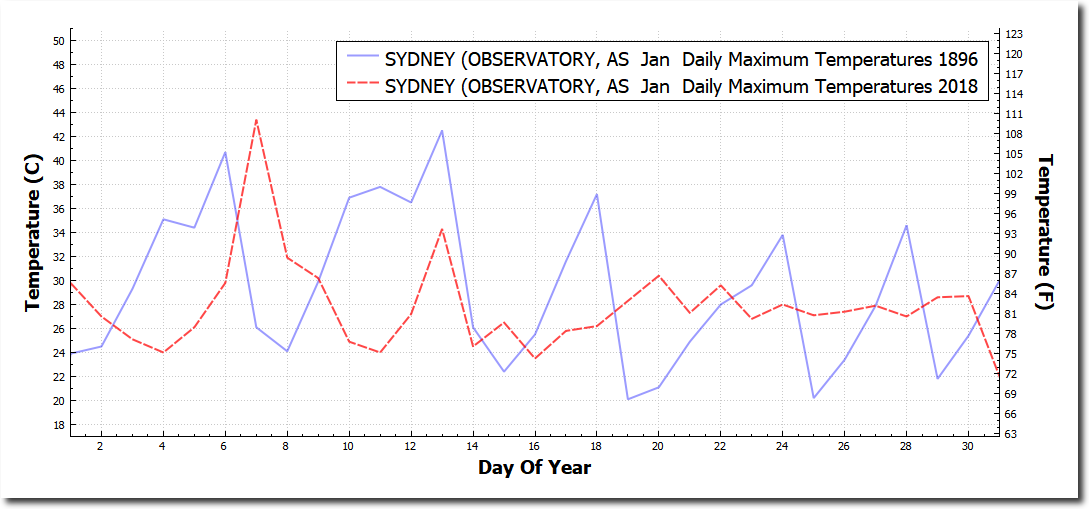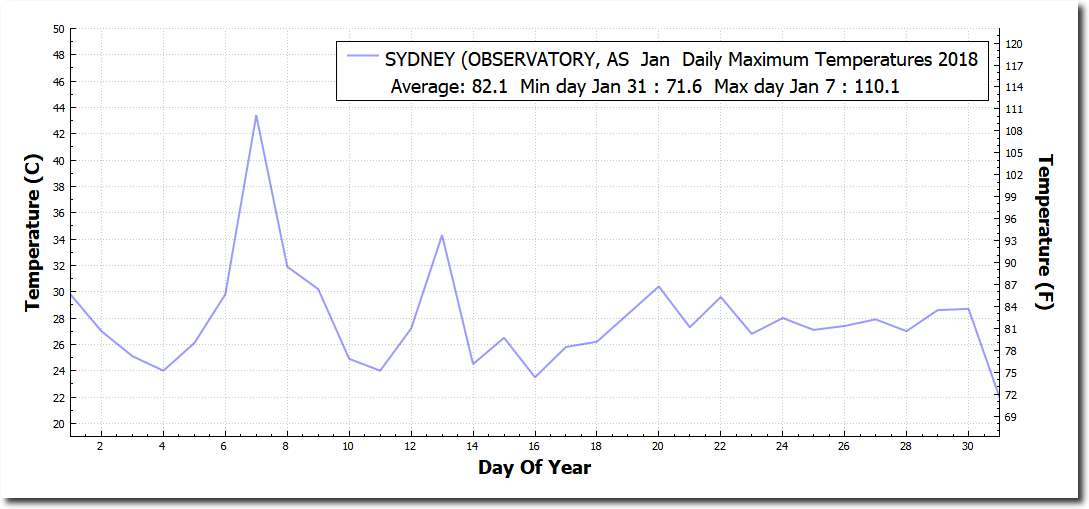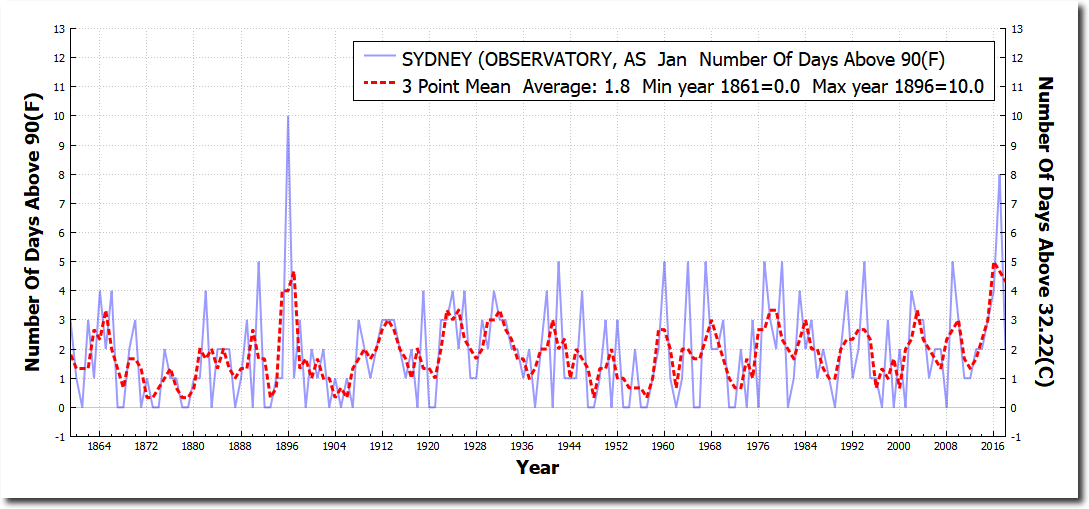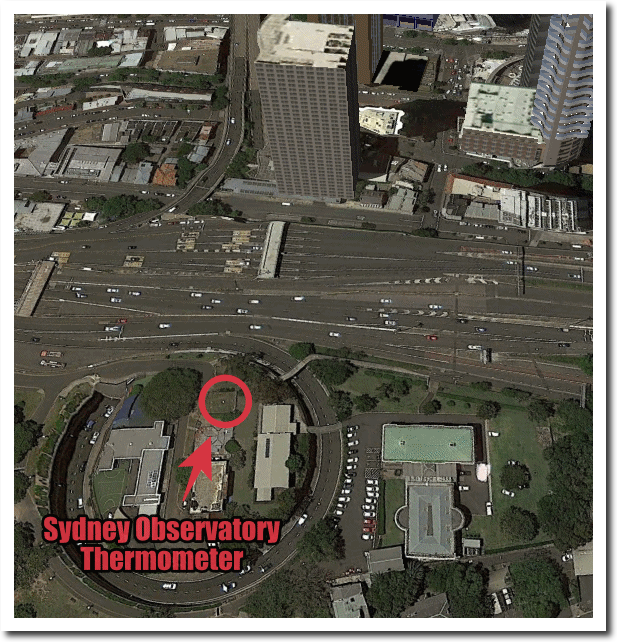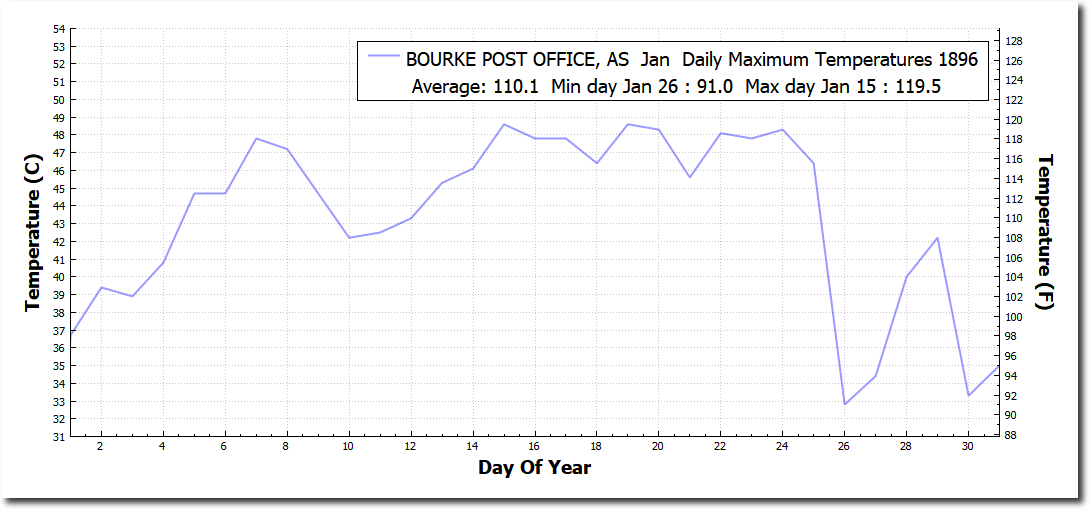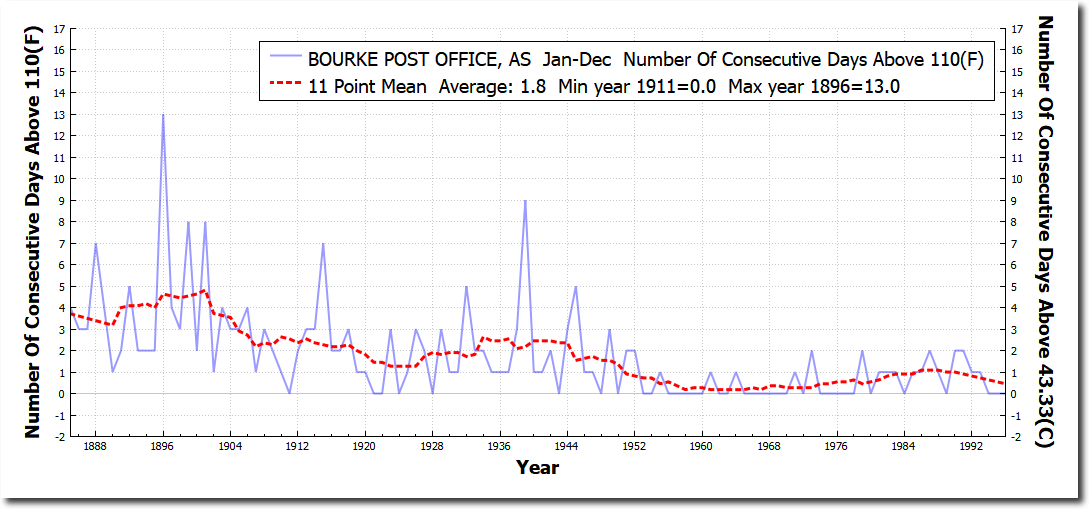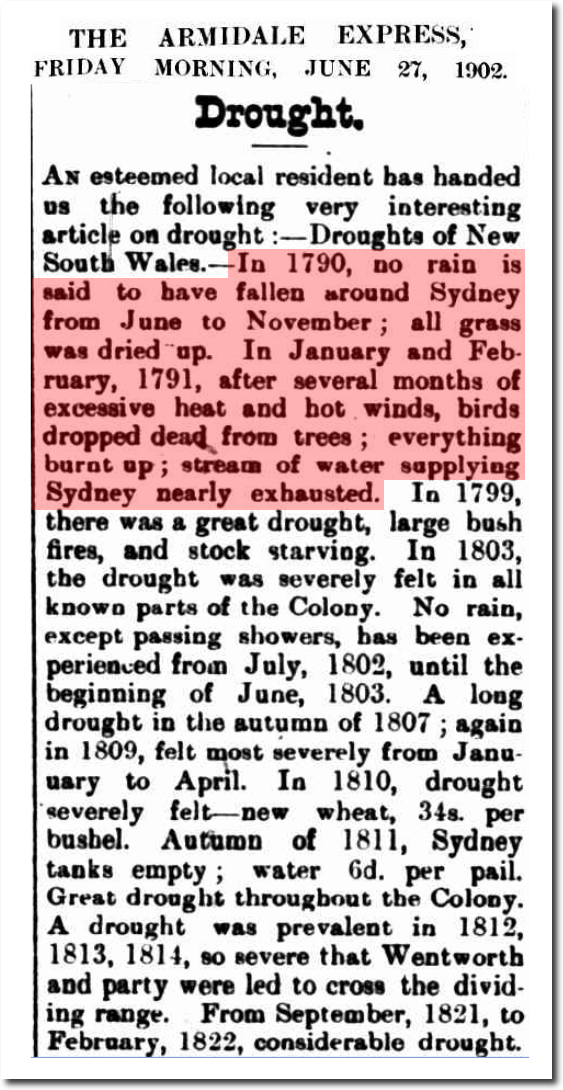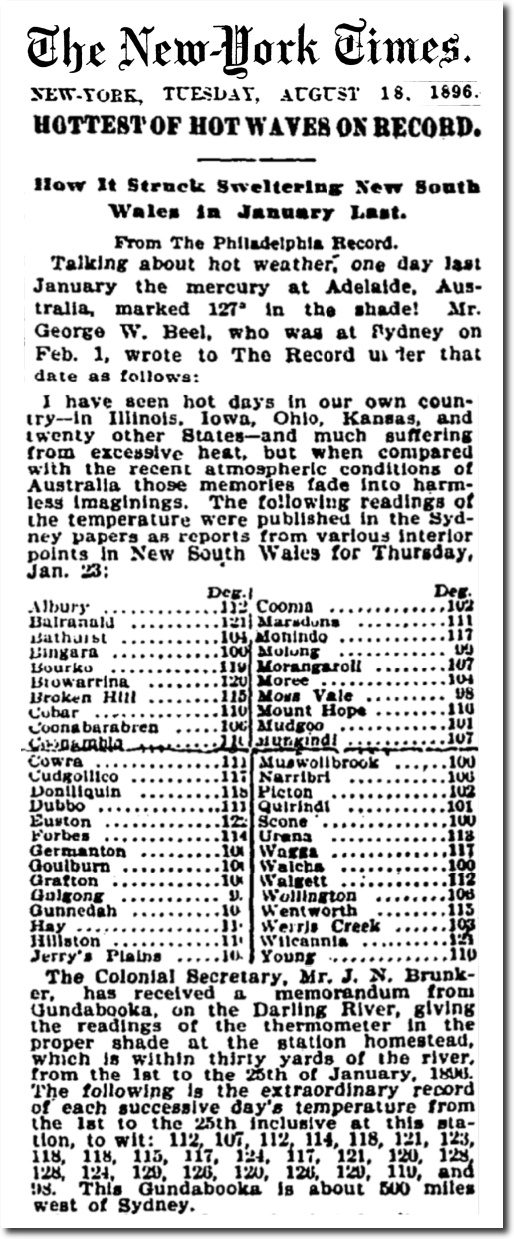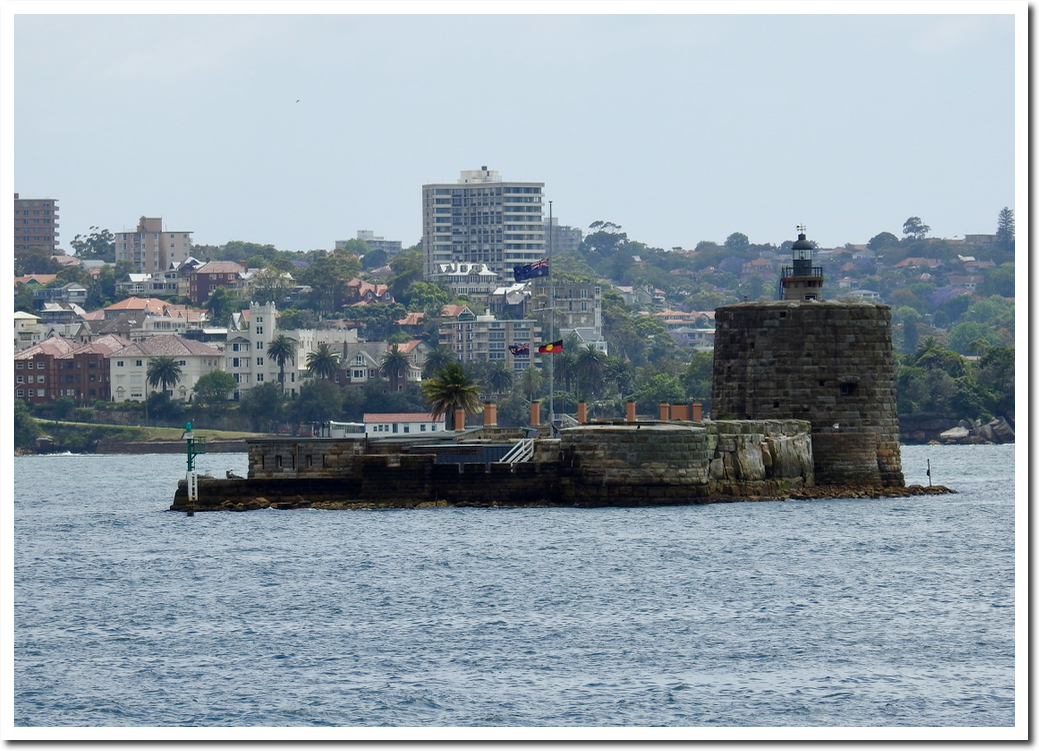In January, the usual batch of fraudsters were touting record heat of 116 degrees in Sydney.
Sydney nearly breaks heat record with 116-degree weather – CBS News
The hottest official temperature in Sydney was 110 degrees. January maximum temperatures in Sydney averaged a blistering 82 degrees, three degrees cooler than January 1896.
Sydney had three days above 90 degrees this year, compared to ten days in 1896.
The Sydney Observatory thermometer is carefully situated next to a couple dozen lanes of asphalt, with a tall building reflecting the afternoon sun on to the thermometer.
West of Sydney, Bourke averaged 110 degrees during January 1896.
And they had thirteen consecutive days over 110 degrees.
Eighty-two degrees may seem unbearable, but in 1790 and 1791 Sydney had no rain for six months and birds were falling dead from the trees from the heat.
27 Jun 1902 – Drought. – Trove
The New York Times reported 127 degrees in the shade in Adelaide in January 1896. My parents spent a January in Adelaide in the 1980’s, and said it never made it above 100 degrees.
And of course, we must not forget the terrifying sea level rise occurring in Sydney too. Exactly the same sea level as 130 years ago.
2016
Pre-1885.

